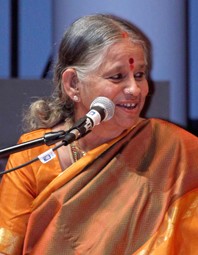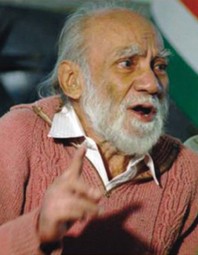HERITAGE - The Big Temple as a centre of art by Chithra Madhavan

One of the most-visited, most photographed, most spoken-about temples in India is the mighty stone edifice dedicated to Lord Brihadeeswara (originally called Rajarajeswaram) in Tanjavur, the former capital of the Chola empire. Constructed in the reign of one of the greatest emperors of India, Rajaraja Chola I (985-1014 AD), it was consecrated on the 275th day of his 25th regnal year, corresponding to 1010 AD. This temple completed 1000 years of continual worship in 2010 AD. While many who visit the temple stand transfixed on viewing the architectural grandeur and sculptural wealth, most are unaware that this religious institution was one of the foremost centres of the fine arts, in particular, music and dance. There is ample evidence of this in the form of epigraphical wealth, stone sculptures and paintings in this temple, which was dedicated to ‘Aadavallan’ (the celestial dancer). Karana sculptures It is common to see sculptures of dancers and musicians adorning the outer walls and pillars of temples of south India. This was probably a reflection of the tradition in ancient India of music and dance being two of the sixteen (shodasa) offerings (upachara-s) to the deity enshrined in temples. However, it is in the Tanjavur temple that, for the first time, the karana-s, as given in the Natya Sastra of sage Bharata are depicted in a sequence.
SAVAL-JAVAB - Sharing the Musiri legacy – Suguna Purushothaman spoke to Shankar Ramachandran

On an extended visit of the United States, veteran musician Suguna Purushothaman participated in the recent Cleveland Tyagaraja Aradhana and gave several concerts and lecture demonstrations in California after that. A veritable storehouse of knowledge and anecdotes about Carnatic music, she launched into explanations on a variety of interesting topics in response to questions during a Sruti interview in the US. Frequently, she also sang a few lines to illustrate her point. The conversation included her views on how pallavi-s should be composed and sung with emphasis on the lyrics without overly emphasising the tala; how niraval should be sung, how sruti bhedam can work to slide from one raga to the next by changing one swara at a time; the salient features and differences between the music of her guru-s Musiri Subramania Iyer and Semmangudi Srinivasa Iyer. The interview became a free flowing lecture demonstration on the most intricate of subjects which she made easy to understand. Her love for the art form, her joy in composing, her respect and admiration for her guru-s and other musicians, and her open-minded inclusion of new thoughts, ideas and views were evident. All of it was punctuated by her fun loving witticisms and laughter. She took me, as it were, on a tour of her musical wonder world. No wonder ‘Suguna Mami’ is regarded as a master teacher in addition to her well known expertise in singing pallavi-s in intricate tala-s and her prowess with ‘dvitala avadhana’.
TALKING THEATRE - Theatre and politics by Indira Parthasarathy

Badal Sircar, who passed away recently, was the founder of what he baptised as the Third Theatre. He performed his plays on the streets and in open spaces, as against the proscenium — a conventional and colonial addiction. He was one among the pioneers of the parallel theatre movement in India during the turbulent 1960s. The street theatre focusing on social and political issues was inclusive in the sense, it banished the aesthetic distance between the performers and the audience. The viewers had a participatory function in the sequential narration of the play. The parallel theatre movement, perhaps, started with Shakespeare. Among his plays, only Troilus and Cressida was not staged before 1898. On the evidence of the Stationer’s Register, the play was in existence in manuscript form by February 1603, but was not printed, as permission for printing was not forthcoming from the authorities. And yet, a vague reference to it as having been enacted by Lord Chamberlin’s Men round about the same year it was available in manuscript form, shows it could have been performed as a sort of parallel theatre cut off from the mainstream plays staged during the Elizabethan period.
Is arts coverage on the way out?
(Part I of edited excerpts from a panel discussion conducted by ITC-SRA at the NCPA auditorium, Mumbai, in January 2010) Convener Arvind Parikh, sitarist, President, Indian Musicological Society; Chairman, ITC-SRA (West) Moderator Shanta Gokhale, arts and literary critic, playwright, author Panelists Dileep Padgaonkar, Consulting Editor, The Times of India N. Murali, Senior Managing Director, The Hindu Naresh Fernandes, Editor-in-Chief, Time Out V. Ramnarayan, Editor-in-Chief, Sruti Ayaz Memon, formerly Senior Editor, DNA Shanta Gokhale (SG): We’ll try to explore the relationship that exists today between the media and the arts, particularly classical music, the cutting down of coverage of arts in general and music in particular in the daily media and the press. There has to be some way in which the media works as a bridge between the arts and its readers. Is it at all possible? Let us begin with the question of cutting down in arts coverage. I call upon the panellists to affirm that it is a fact and offer some kind of an explanation why we have come to this path, when people of my generation grew up to understand what classical music was about through newspaper columns, reviews of music and the other arts. Where does that leave media responsibility?


